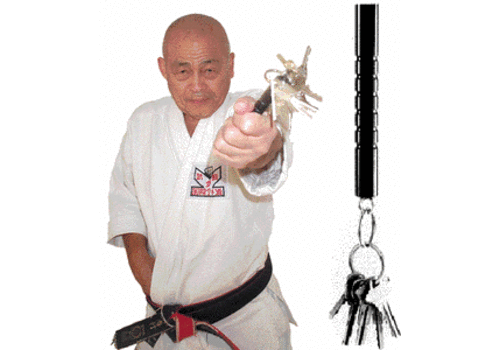
You want to maximize your BJJJ training output. To do this, you need to strike a balance between intense training and sufficient recovery. Burnout and injury can result from too much training. To recover, you need to get a good night's sleep. You can help your body produce hormones that will promote muscle growth as well as repair minor injuries caused by your training.
Training at high intensity can lead to burnout
Burnout refers to a condition that prevents you from continuing training even if you feel completely exhausted. It is caused due to emotional and physical exhaustion. It leads to poor performance, reduced mood, and negative stress. It is more common in athletes at high levels. Poor sleep patterns and uniform training are common reasons.
Overtraining causes fatigue, decreased performance, and frequent injuries and infections. This condition is caused by chronic stress, lack of sleep and insufficient rest. This condition can often be avoided by taking time off and getting well.

BJJJ training is about maximising output.
A well-trained aerobic system and glycolytic system are essential for good BJJ conditioning. Both of these systems work together to maximize workout power and reduce muscle burn faster. These systems can be trained using high-intensity interval training. This type of training involves alternating periods of high intensity with active rest periods.
A well-designed training plan can help build strength and power for BJJ. You don't have to lift heavy weights. Anyone who has ever grappled knows that it is very exhausting. You are constantly making isometric contractions which can become very exhausting.
Maintaining your skills even after a layoff
It is crucial to remain productive and improve your skills if you have recently been laid off. You can stay sharp and engaged during difficult times by taking on personal tasks, starting a consultancy business, and learning new skills. These activities will not only keep you busy but also improve your skills.
Volunteering in new, innovative ways is one way to retain your skills after a layoff. Participating in cutting-edge projects can show potential employers you are willing to learn. Keeping your skills current will also make you more visible. Research shows that employees who are motivated are more productive and are more supportive of workplace changes.

How often should you practice bjj?
BJJ is best practiced once or twice a week by the average person. To progress quickly and attain your ultimate goal, you'll need to train more often. You should aim for at least four to seven sessions per week.
Although there is no set rule for BJJ, most practitioners agree that three days per week is sufficient to make steady progress and recover. In addition, this allows time for life balance. If you are considering competing, you might want to increase your work hours to four to five days per week.
FAQ
Which is the best spot to practice self defense?
Self-defense should be practiced in your own backyard. If you don't have enough space you can still practice elsewhere.
You can practice in a parking garage, in a park or in your living room. Just make sure that you keep your eyes open and always be aware of your surroundings.
You shouldn't practice alone. This can be dangerous. Always practice alongside a partner.
What are some self defence tips for women in the workplace?
When practicing self-defense, you need to be able to react quickly. This means that you need to be prepared for anything.
Train with friends is one of your best options. You can practice together and work together on your technique with a partner.
Another tip: Practice with something heavy. If you are attacked, you'll be more likely to hit your attacker hard if you are holding something heavy.
Is it legal to carry a stungun?
Yes. However, you will need a permit issued by your state.
You must complete an application form to apply for a permit and pay a fee.
You must keep your permit visible, such as in your wallet, once you receive it.
You will need to repeat the process if your permit is lost.
Where can a stungun be purchased?
You can find stun guns in many places.
You can search online for Amazon.com, eBay, Walmart, and many other stores.
Brick-and-mortar shops such as hardware and sporting goods stores are also available.
How can I learn self-defense at home?
If you are looking for a way to improve your self-defense skills, there are many ways to do this. Martial Arts is a great way to get started. Martial arts are great as they teach you how defend yourself without the use of weapons. They help to build confidence as well as fitness. Most schools offer classes online, so you don't need to be present at a class. It's important to know what type of martial art you want to learn. Do you want to learn Kung Fu? Or perhaps Karate? While these styles are quite different, both are excellent options. The difference between them is mainly based on the style of fighting used. Karate, for example, is more focused on striking techniques. Kung fu is more concerned with grappling and kicks.
When choosing a school, another thing to consider is whether they offer instruction in multiple formats. This is the variety of martial arts styles offered by a school. Some schools only offer instruction in Tai Chi while others can teach you all forms of martial art. It doesn't matter what martial art you choose, you should make sure that the school you choose is accredited. Ask your network if you know anyone who has attended the school and ask them questions about the history of their instructors. If you are able, go to the school and speak with someone who teaches there.
What should I look out for in a self defense class?
Consider the reputation of the instructor and their experience in self-defense classes. Ask about their qualifications and background.
Ask if they offer discounts or free trials. Some instructors offer exclusive offers to students who sign up for their courses.
Ask if they offer online classes so you can take advantage of them whenever you want.
Ask the instructor if they offer any emergency medical treatment after a class. This is especially important if you get injured during a class.
You should look for classes that offer a wide range of exercises. This means that you will get plenty of time to try each technique before moving on to the next one.
Statistics
- In a January 2018 survey of 1,000 women nationwide, 81 percent reported experiencing some form of sexual harassment, assault, or both in their lifetime. (healthline.com)
- Some people walk into a gym thinking they are going to become the best by training whenever they like and not putting 100% effort in. (budodragon.com)
- The Rape, Abuse & Incest National Network reports that 70 percent of sexual violence cases aren't committed by random strangers in a dark alley but by people we know: friends, family, partners, co-workers, etc. (healthline.com)
- Saying this, Self defense 101 would be the importance of situational awareness, which can never be replaced by the finest of martial arts, because it is this that would help you to avoid any likely attacks in the first place. (worldofselfdefense.com)
External Links
How To
Which type of self-defense should you learn?
Self-defense can be defined as a broad term that encompasses a variety of options. There are many ways to learn self-defense. These are some of the most well-known:
-
Boxing – Boxing can be used for self-defense. It trains you to fight using your hands. Many people believe that only men can box. However, women can learn to box. You can learn boxing from women using a variety methods including private lessons and gyms as well as online courses.
-
Wrestling - Many people believe that wrestling isn't a real sport, but it actually is. Wrestling was once America's national pastime. You can learn to wrestle online, in a gym, or privately.
-
Jujitsu: Jujitsu can be described as another martial art that teaches how to defend your self using your body weight. It's easy to learn and perfects your balance and coordination.
-
Kickboxing – Kickboxing is similar in style to Muay Thai except it uses kicks rather than punches. It is a full-contact, combat sport that doesn't need rules. Because it is easy to learn, it's a great choice for beginners.
-
Tae Kwon Do - TKD is a Korean martial art that combines elements of karate, taekwondo, and jujitsu. It is an excellent choice for self-defense training without the fear of hurting someone.
-
Mixed Martial Arts (MMA - MMA is a combination of many martial arts. It combines Brazilian Jiu Jitsu, Judo, Boxing, Wrestling, and Sambo. Because it is so effective, it's one the fastest-growing sports in today's world.
-
Karate - Karate is a Japanese martial art that focuses on kicking techniques. It has existed for hundreds of centuries and has evolved throughout time. Today there are many different styles of karate, each with its own unique moves and training methods.
-
Knife Fighting: Knives are extremely useful for defending yourself. You don't have to get close to your attacker in order to stab them. Only you need to know how to safely use a knife.
-
Pepper Spray- Pepper spray can be used as a non-lethal weapon to help you escape from attacks or stop them from beginning. However, pepper spray should not be used on attackers because they may get burned.
-
Firearms – Shooting an attacker is the last resort. This is commonly done by trained civilians and law enforcement officers.
-
Self-Defense Classes – A self defense class can be a great way for you to learn all these skills at once. They typically cover everything from grappling to shooting.
-
Combative Sports – Another option is to participate in combative sports such as mixed martial arts fighting, kickboxing or amateur wrestling. These sports require a lot of practice and discipline. They also teach you how to protect your self.
-
Martial Arts Schools. If you're serious in learning how to defend your self, then go to school that teaches martial art. Some schools offer classes that include weapons as well.
-
Online Courses – You also have many free resources that you could visit. 15) Books - Finally, some books may be helpful. Alan Peppard's "The Complete Idiot's Guides To Self Protection" book covers all of the mentioned topics.
-
Begin with what you know - Before learning something new, be sure to first master the things you already know. This will help you avoid making costly mistakes that could endanger you.
I'm thinking I might try self-defense. I have always wanted learn to fight but was not interested in doing it. Now that I am older, it is time to take better care of me and stop relying on others.
I'm going to start slowly and see where it goes from there. I am thinking about joining the local gym to get started with weight training and such. I am still deciding if I should buy a gun.